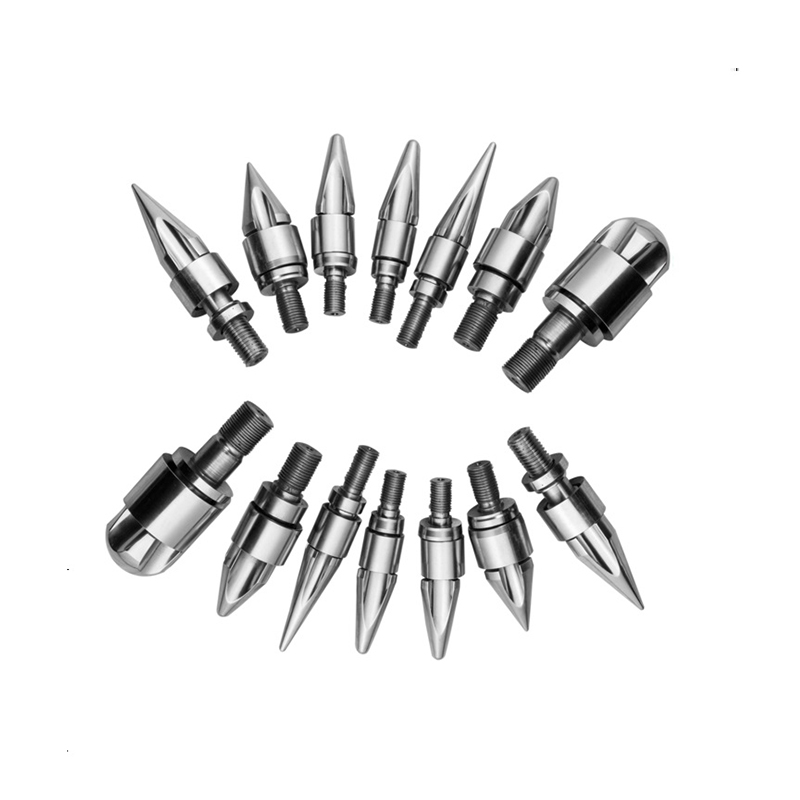OUR HONOR
Screw Barrel For Injection Machine Industry knowledge
How do the specifications of screw barrel for injection machines impact melt homogeneity and part quality?
The specifications of screw barrel for injection machines significantly influence melt homogeneity and part quality in injection molding processes. Here's how various specifications impact these critical aspects:
Screw Configuration: The design of the screw, encompassing factors such as flight depth, pitch, and channel geometry, dictates material conveyance, compression, melting, and mixing efficiency. A well-crafted screw ensures even material flow and consistent melting, resulting in a uniformly blended melt and enhanced part quality.
Barrel Length and Diameter: Both the length and diameter of the barrel affect residence time, heat transfer, and material compression. Appropriately sized barrels allow for thorough melting and mixing, maintaining melt uniformity throughout the barrel. This helps prevent variations in melt temperature and composition, ensuring superior part quality.
Compression Ratio Optimization: The compression ratio, indicating the feed zone channel depth relative to the metering zone channel depth, influences material compression and melting intensity. Optimizing this ratio promotes efficient material plasticization and blending, resulting in a homogeneous melt with uniform properties.
Material and Coating Selection: The choice of materials for the screw and barrel, along with potential coatings, impacts wear resistance, corrosion resistance, and thermal conductivity. Superior materials and coatings enhance durability, minimizing material degradation and enhancing melt homogeneity and part quality.
Screw Speed and Torque Control: Rotational speed and torque govern material conveyance, melting, and mixing rates. Fine-tuning screw speed and torque ensures effective material processing, facilitating thorough mixing and melt homogeneity, ultimately enhancing part quality.
Temperature Management: Precise temperature control within the barrel is critical for maintaining desired material viscosity and flow characteristics. Effective heating and cooling systems ensure consistent temperature distribution, preventing melt overheating or underheating and promoting melt uniformity.
Melt Pressure and Flow Dynamics: Melt pressure and flow characteristics directly impact part filling, packing, and cooling during injection molding. Proper screw barrel specifications optimize melt pressure and flow dynamics, resulting in consistent part quality and minimizing defects.
In summary, the specifications of screw barrel for injection machines are pivotal in achieving melt homogeneity and superior part quality in injection molding processes. Through meticulous optimization of screw design, barrel dimensions, compression ratio, material selection, screw speed, temperature control, and melt pressure, injection molding operations can attain consistent and high-quality parts.
The specifications of screw barrel for injection machines significantly influence melt homogeneity and part quality in injection molding processes. Here's how various specifications impact these critical aspects:
Screw Configuration: The design of the screw, encompassing factors such as flight depth, pitch, and channel geometry, dictates material conveyance, compression, melting, and mixing efficiency. A well-crafted screw ensures even material flow and consistent melting, resulting in a uniformly blended melt and enhanced part quality.
Barrel Length and Diameter: Both the length and diameter of the barrel affect residence time, heat transfer, and material compression. Appropriately sized barrels allow for thorough melting and mixing, maintaining melt uniformity throughout the barrel. This helps prevent variations in melt temperature and composition, ensuring superior part quality.
Compression Ratio Optimization: The compression ratio, indicating the feed zone channel depth relative to the metering zone channel depth, influences material compression and melting intensity. Optimizing this ratio promotes efficient material plasticization and blending, resulting in a homogeneous melt with uniform properties.
Material and Coating Selection: The choice of materials for the screw and barrel, along with potential coatings, impacts wear resistance, corrosion resistance, and thermal conductivity. Superior materials and coatings enhance durability, minimizing material degradation and enhancing melt homogeneity and part quality.
Screw Speed and Torque Control: Rotational speed and torque govern material conveyance, melting, and mixing rates. Fine-tuning screw speed and torque ensures effective material processing, facilitating thorough mixing and melt homogeneity, ultimately enhancing part quality.
Temperature Management: Precise temperature control within the barrel is critical for maintaining desired material viscosity and flow characteristics. Effective heating and cooling systems ensure consistent temperature distribution, preventing melt overheating or underheating and promoting melt uniformity.
Melt Pressure and Flow Dynamics: Melt pressure and flow characteristics directly impact part filling, packing, and cooling during injection molding. Proper screw barrel specifications optimize melt pressure and flow dynamics, resulting in consistent part quality and minimizing defects.
In summary, the specifications of screw barrel for injection machines are pivotal in achieving melt homogeneity and superior part quality in injection molding processes. Through meticulous optimization of screw design, barrel dimensions, compression ratio, material selection, screw speed, temperature control, and melt pressure, injection molding operations can attain consistent and high-quality parts.



 عربى
عربى












